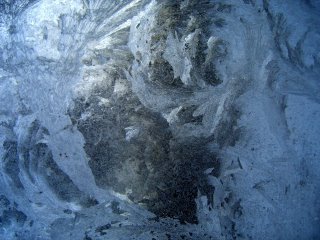Friday, May 04, 2012
Saturday, February 27, 2010
Film vs Digital yet again...
A Google search for "Film vs Digital" brings up this result
http://www.google.com/search?q=film+vs+digital&ie=utf-8&oe=utf-8&aq=t&rls=org.mozilla:en-US:official&client=firefox-a
If you want details, there they are.
The short answer is that for absolute highest quality film still stands out.
(Think medium and large format color positives and b&w negatives. Color negatives have tremendous content but it's difficult to get the proper end results.)
http://www.google.com/search?q=film+vs+digital&ie=utf-8&oe=utf-8&aq=t&rls=org.mozilla:en-US:official&client=firefox-a
If you want details, there they are.
The short answer is that for absolute highest quality film still stands out.
(Think medium and large format color positives and b&w negatives. Color negatives have tremendous content but it's difficult to get the proper end results.)
Friday, January 16, 2009
Update
Here's a brief update to the post of Sunday, April 16, 2006-
'Photography- Film vs Digital.'
Konica-Minolta Photo Division has been part of Sony for some time now; The current SLR's are evolutions of the Minolta design and many of the old Minolta lenses can still be used with the new cameras. The rest of the post is still pertinent.
'Photography- Film vs Digital.'
Konica-Minolta Photo Division has been part of Sony for some time now; The current SLR's are evolutions of the Minolta design and many of the old Minolta lenses can still be used with the new cameras. The rest of the post is still pertinent.
Wednesday, January 07, 2009
Still in the game
In spite of all the ongoing digital photography advances, I still like using film now and then. I shoot digital around 90% of the time but film still has an appeal. The experience of using a classic manual camera is very different, compared to digital.
Sunday, April 16, 2006
Photography- Film vs Digital
A few more comments on this subject...
The popularity of digital continues to grow at a rapid pace. As a result, film sales and services are declining. Manufacturers are cutting back or eliminating product lines (eg Kodak, Konica-Minolta, Nikon, etc). However, there will still be a significant presence in this area of photography for years to come. While amateurs are flocking to digital, many serious photographers and pro's continue to use film products extensively, often exclusively or in conjunction with digital. As well as the quality benefit, there is a certain subjective aesthetic appeal to traditional (film) photography. A lot of film related equipment is now available for incredibly low prices both new and used. It's easy to find a nice used 35mm SLR camera/ lens combo for under $100. Older models by Canon, Konica, Minolta, Nikon, Olympus, Pentax, Practica, and others can be had for very little. Most of the '60's-70's cameras are largely mechanical and will work even without batteries, except for meter functions. Many users (particularly pro's) in those days preferred handheld meters anyway. The build quality of most of this old gear was very high so it remains quite serviceable even today, and results can be superb.
To be continued...
The popularity of digital continues to grow at a rapid pace. As a result, film sales and services are declining. Manufacturers are cutting back or eliminating product lines (eg Kodak, Konica-Minolta, Nikon, etc). However, there will still be a significant presence in this area of photography for years to come. While amateurs are flocking to digital, many serious photographers and pro's continue to use film products extensively, often exclusively or in conjunction with digital. As well as the quality benefit, there is a certain subjective aesthetic appeal to traditional (film) photography. A lot of film related equipment is now available for incredibly low prices both new and used. It's easy to find a nice used 35mm SLR camera/ lens combo for under $100. Older models by Canon, Konica, Minolta, Nikon, Olympus, Pentax, Practica, and others can be had for very little. Most of the '60's-70's cameras are largely mechanical and will work even without batteries, except for meter functions. Many users (particularly pro's) in those days preferred handheld meters anyway. The build quality of most of this old gear was very high so it remains quite serviceable even today, and results can be superb.
To be continued...
Thursday, April 13, 2006
Wednesday, April 12, 2006
Tuesday, April 11, 2006
Tuesday, April 04, 2006
Sunday, February 12, 2006
Monday, February 06, 2006
Morning Glory at Twilight
Monday, November 21, 2005
In a nutshell...
Film vs. Digital- the debate rages on?
Film advantages: QUALITY- Film still holds the definitive edge at comparable ISO's. Only the very best pro digital equipment equals it. LONGEVITY- Long term storage of digital files and inkjet prints is still not up to film and conventional prints. PRICE- Excellent film cameras and lenses are available new and used for far less than comparable digital gear. Developing costs can be less per print than digital, even including film cost. There is substantial investment in ink, paper, hardware, software, and time when you print digitally. CONVENIENCE- Processing doesn't take up the user's time. CONVERSION- Film or prints can be scanned to digital files, thereby allowing the advantages of digital storage and manipulation.
Digital advantages: IMMEDIATE RESULTS- Instant review, print out, email, post online, etc. right away. MULTIPLE EXPOSURES- Since in-camera exposures cost virtually nothing, it's possible to shoot a number of pictures to ensure good results. CONVENIENCE- Upload files to commercial processor for conventional prints and other photo products. CUSTOMIZED RESULTS- User can tweak and edit files endlessly with proper software.
Film advantages: QUALITY- Film still holds the definitive edge at comparable ISO's. Only the very best pro digital equipment equals it. LONGEVITY- Long term storage of digital files and inkjet prints is still not up to film and conventional prints. PRICE- Excellent film cameras and lenses are available new and used for far less than comparable digital gear. Developing costs can be less per print than digital, even including film cost. There is substantial investment in ink, paper, hardware, software, and time when you print digitally. CONVENIENCE- Processing doesn't take up the user's time. CONVERSION- Film or prints can be scanned to digital files, thereby allowing the advantages of digital storage and manipulation.
Digital advantages: IMMEDIATE RESULTS- Instant review, print out, email, post online, etc. right away. MULTIPLE EXPOSURES- Since in-camera exposures cost virtually nothing, it's possible to shoot a number of pictures to ensure good results. CONVENIENCE- Upload files to commercial processor for conventional prints and other photo products. CUSTOMIZED RESULTS- User can tweak and edit files endlessly with proper software.
Thursday, October 06, 2005
Subscribe to:
Comments (Atom)



















